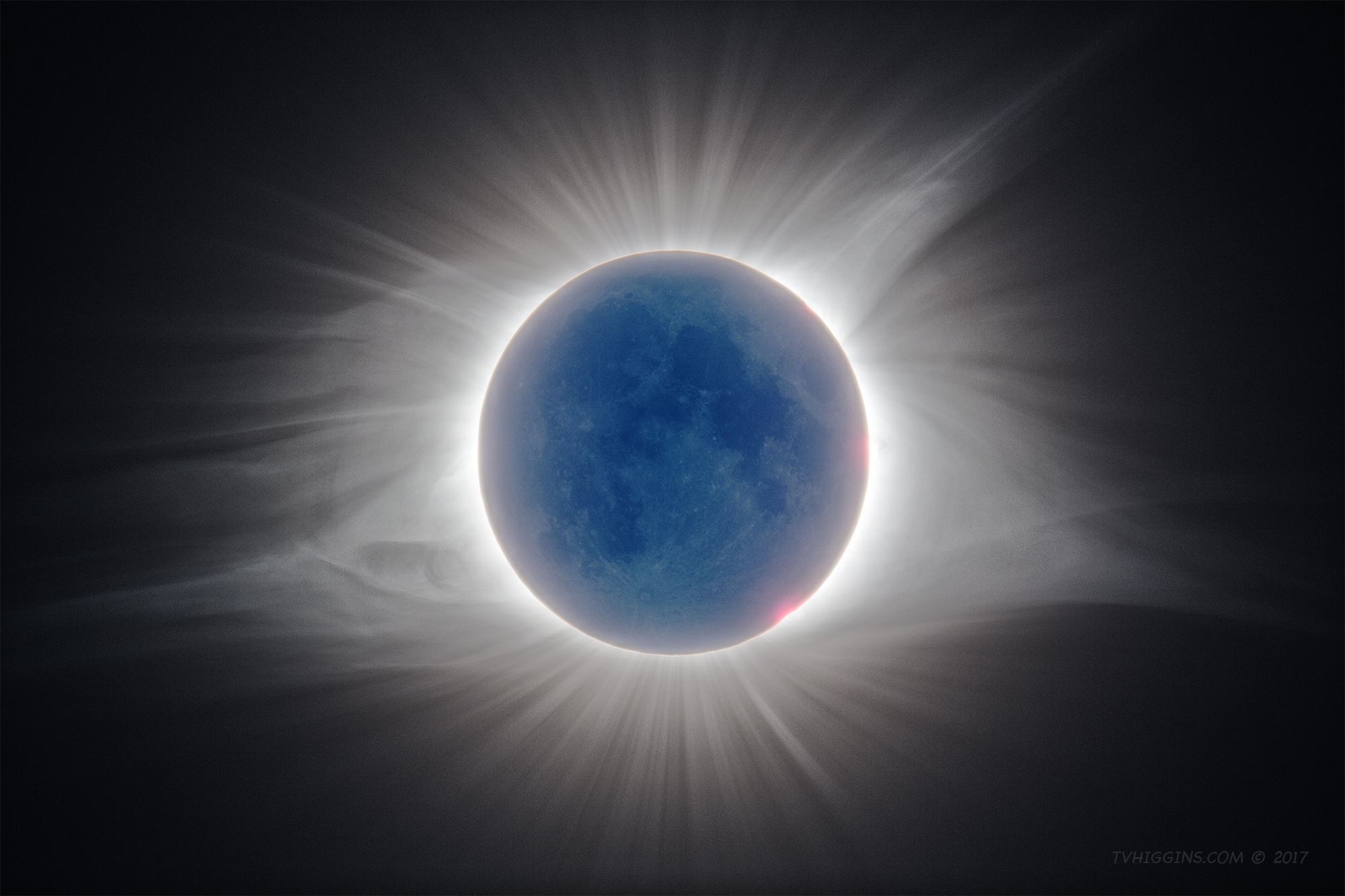2017 Solar Eclipse: The Solar Corona

A high-dynamic-range image showcases the solar corona and the Moon during The Great American Eclipse of 2017.
- Telescope: Stellarvue SVA130T-IS
- Mount: Losmandy G-11 with Gemini 2 controller
- Autoguiding: No
- Optical Configuration: 0.72x field flattener & reducer (f/5); no solar filter during totality
- Camera: Canon 60Da
- Light Frame(s): 6 frames from 1/500 sec to 1 sec
- Calibration: None (no darks, no flats, no biases)
- Exposure Time(s): 1/500, 1/250, 1/125, 1/60, 1/30 sec, and 1 sec
- ISO: 100
- Processing: Photoshop CC using HDR Pro
- Imaging Location: Prairie City, Ore.
This high-dynamic-range image reveals many lunar features along with the detailed structure of the solar corona during The Great American Eclipse of 2017. Super-heated plasma escaping from the sun creates the solar corona and becomes the solar wind that blows through our solar system at a million miles per hour. The charged particles that make up the coronal plasma follow the magnetic field lines of the sun and form streamers in the corona, like iron filings around a magnet. In this image, north is up, south is down, east is left, and west is right.
Sunlight reflecting from our Earth during the eclipse illuminates the Moon and bounces back to Earth as “earthshine.” Because of this earthshine, lunar features such as the “seas” and several large craters (Tycho, Copernicus, etc.) can be imaged during totality. The blue color of the Moon comes from our blue sky.